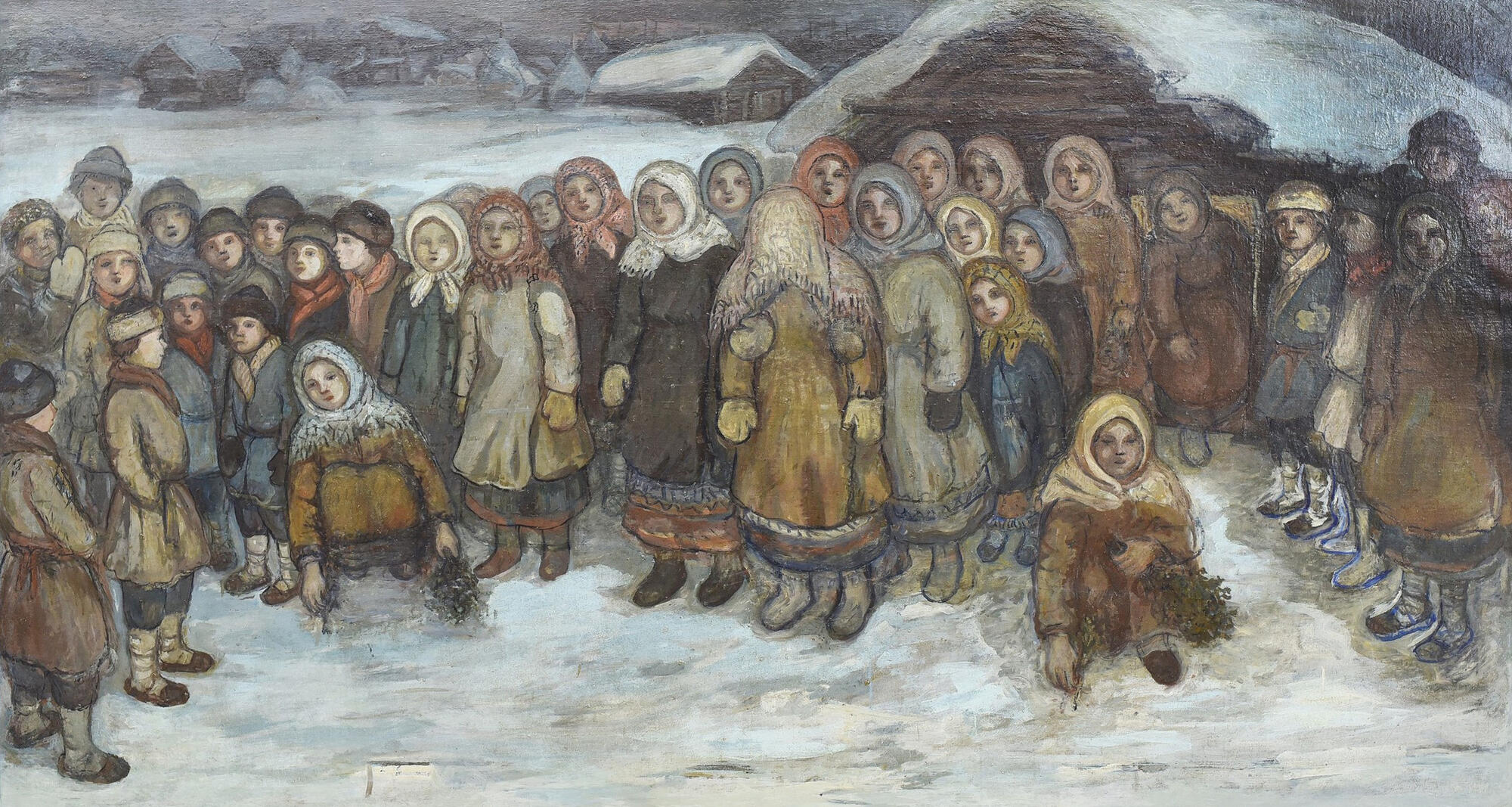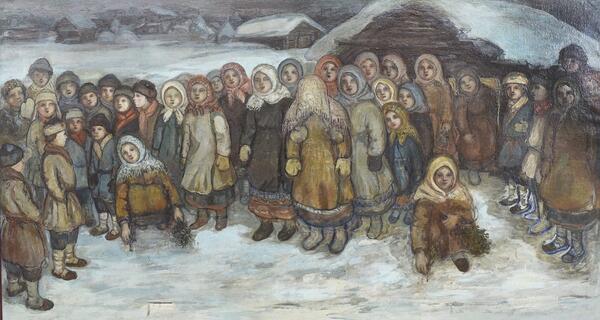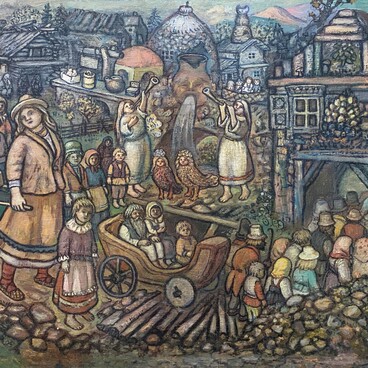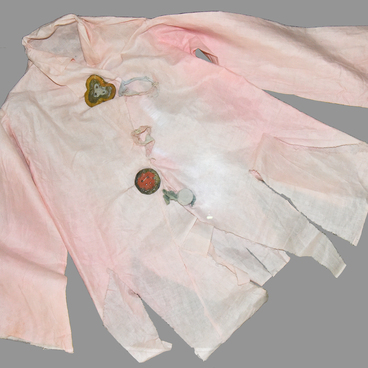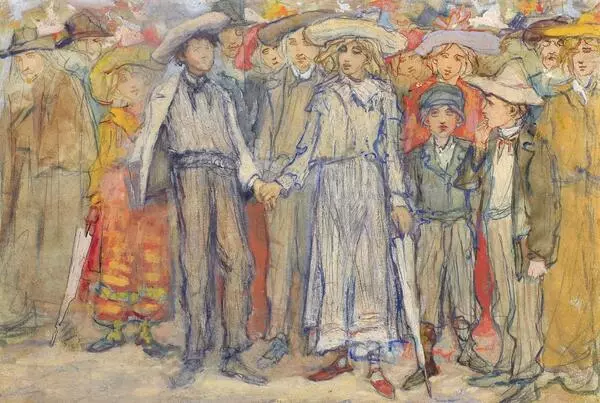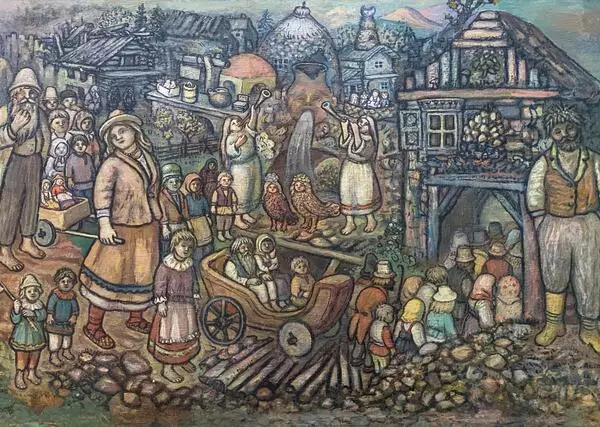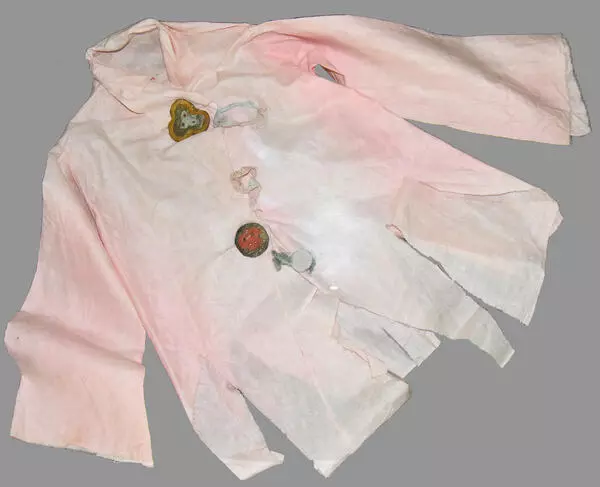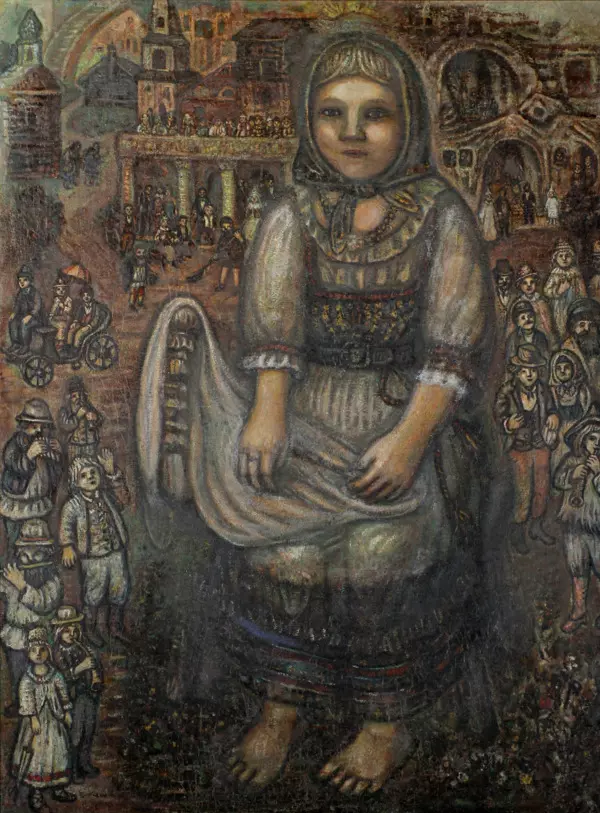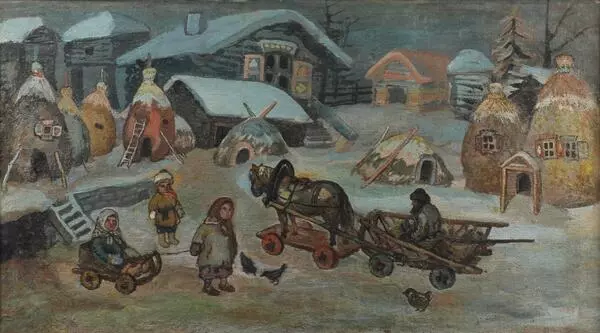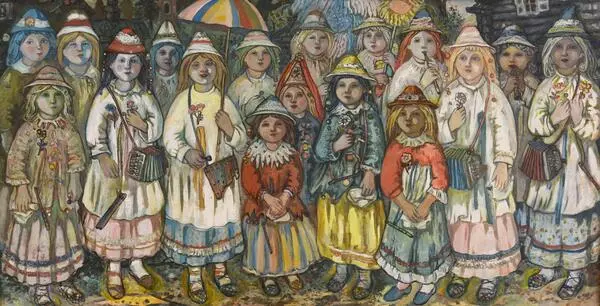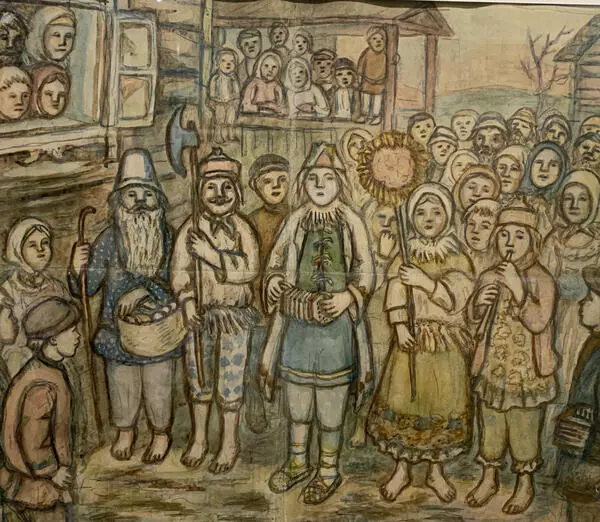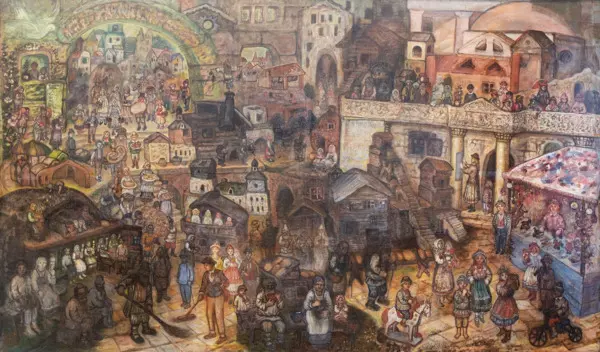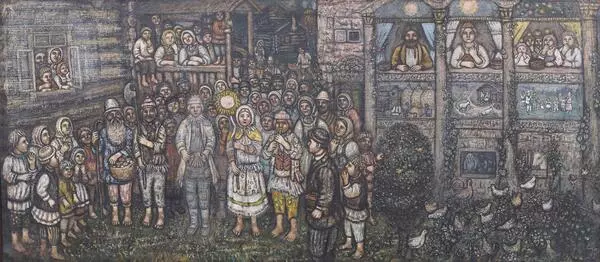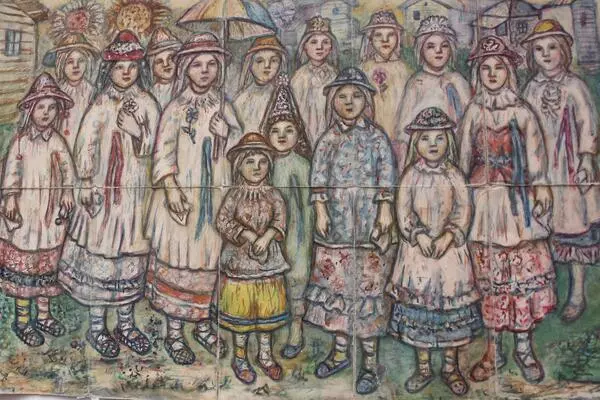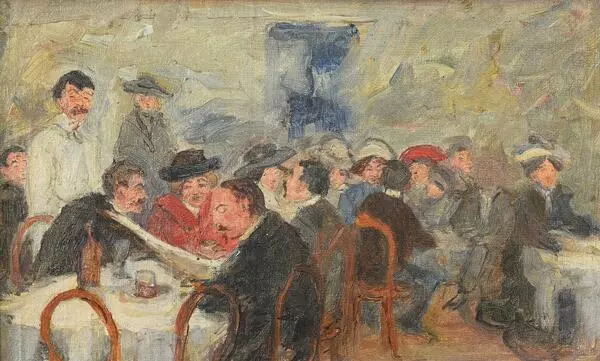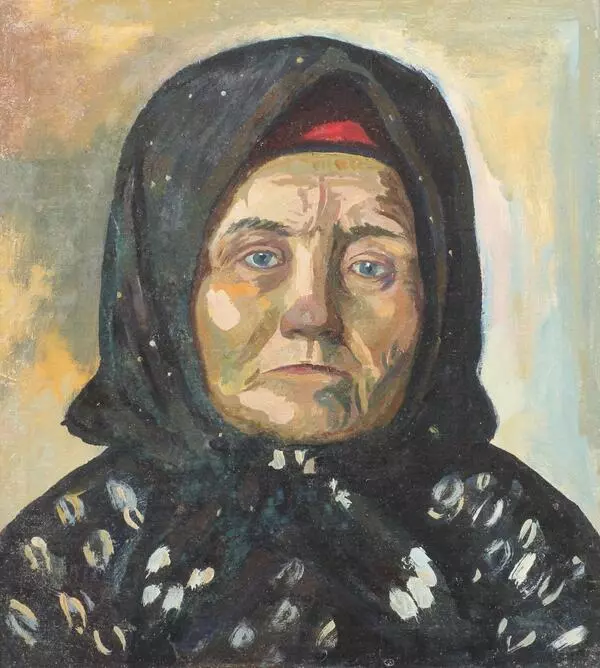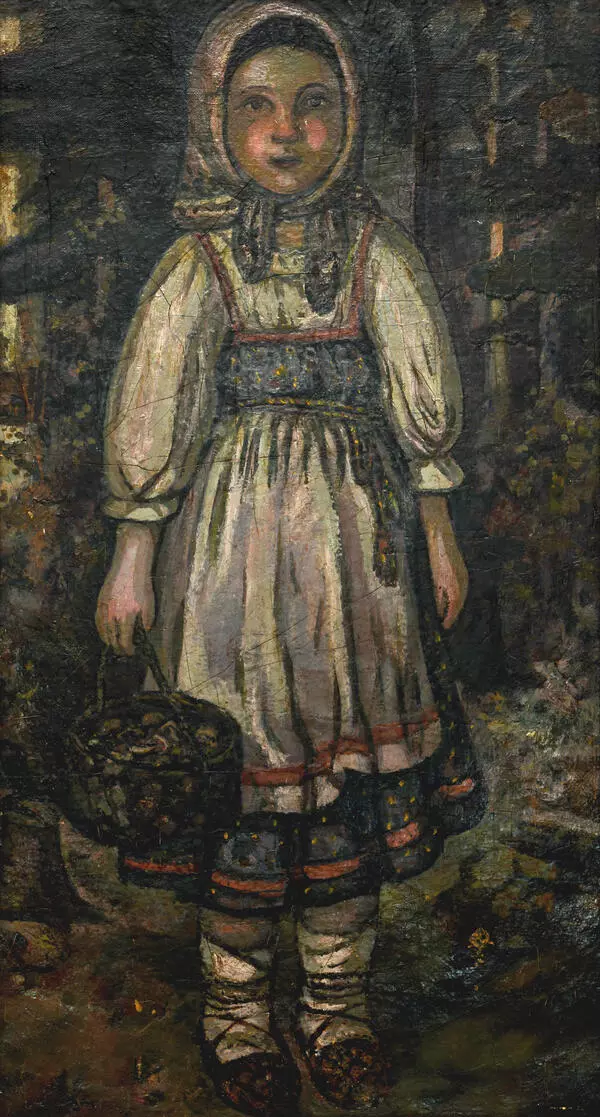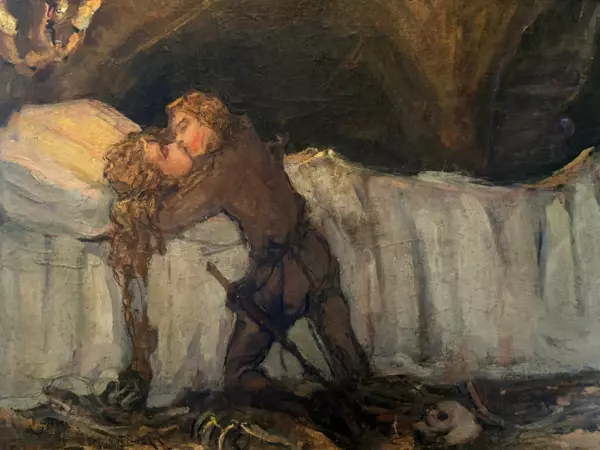Weddings are some of the most important events in the life of a peasant family that require extensive preparations beforehand. Among Yefim Chestnyakov’s creations, a number of his literary and art works are dedicated to peasant weddings. One of them is the painting “A bride being led out of a banya”. Weddings in villages of Kologrivsky Uyezd took place from the middle of October (the feast of Pokrov) to the middle of winter. There were several traditional stages before the wedding itself.
Initially, there were “sgovory” or “prosvatki” (discussions between the parents of the future bride and groom). During this phase, a “rukobitiye” (an engagement) was meant to take place when the fathers “shook on it”, i.e. both families agreed on the date of the wedding and the dowry. The next step included “smotriny”: the parents of the bride visited the family of the groom to see the home where their daughter would live. Right before the wedding, the bride had a “devishnik” (a bachelorette party of sorts). Its main purpose was to display the maiden’s beauty (represented by a fir tree decorated with ribbons) for the last time to say farewell to it. In the evening, after the ‘devishnik’, the customary bathing of the bride in a banya took place. The wedding itself was held the very next day and lasted two to three days. Two weeks to several months could pass from the time the discussions (‘sgovory’) started to the day the wedding took place.
The folk tradition of bathing the bride before her wedding was essentially an ancient pagan ritual full of mysticism. It occurred the evening before the nuptials. During the entire ceremony, there were lamentations over the ‘coming death’ of the bride, as she was to ‘die’, as a maiden within her family, and was then to be reborn as a wife, a member of her husband’s lineage. Hence, the bride depicted in Yefim Chestnyakov’s painting looks otherworldly and even frightening, after all, during such a transition, she was equated to a spirit. Hence, others were wary or even scared of her. In his work, the artist captured the moment when the bride comes out of the banya. Her head is covered by a thick dark blanket, a symbol of protection, which was necessary because peasants from the Kologrivsky region believed that she could unintentionally cast an evil eye on them. There is an entire procession around the bride — altogether there are 34 figures.
The group is divided exactly in half along the painting’s invisible horizontal axis. The people in the two groups are standing in semi-circles and right where they join, in the center of the composition, there is the main subject. In front of her, there is open boundless space. The crowd mainly comprises young men and women, dressed in winter clothes: sheepskin coats, warm kerchiefs and hats, as well as “onuchi” (leg wrappings) and bast shoes. All the figures are depicted standing with the exception of two girls, to the left and right of the center. They are both sitting on their haunches. The two are friends of the bride, who look as if they are sweeping or clearing the path in front of her. However, in reality, if one were to read a description of such a ceremony, it would become clear that the women are not sweeping the ground with a broom but sticking branches into the snow. This was done so that a forest would grow out of the broom’s twigs and prevent the groom from reaching his bride. And during the entire time, the bride was supposed to wail and cry, thus saying farewell to her maidenhood.
Initially, there were “sgovory” or “prosvatki” (discussions between the parents of the future bride and groom). During this phase, a “rukobitiye” (an engagement) was meant to take place when the fathers “shook on it”, i.e. both families agreed on the date of the wedding and the dowry. The next step included “smotriny”: the parents of the bride visited the family of the groom to see the home where their daughter would live. Right before the wedding, the bride had a “devishnik” (a bachelorette party of sorts). Its main purpose was to display the maiden’s beauty (represented by a fir tree decorated with ribbons) for the last time to say farewell to it. In the evening, after the ‘devishnik’, the customary bathing of the bride in a banya took place. The wedding itself was held the very next day and lasted two to three days. Two weeks to several months could pass from the time the discussions (‘sgovory’) started to the day the wedding took place.
The folk tradition of bathing the bride before her wedding was essentially an ancient pagan ritual full of mysticism. It occurred the evening before the nuptials. During the entire ceremony, there were lamentations over the ‘coming death’ of the bride, as she was to ‘die’, as a maiden within her family, and was then to be reborn as a wife, a member of her husband’s lineage. Hence, the bride depicted in Yefim Chestnyakov’s painting looks otherworldly and even frightening, after all, during such a transition, she was equated to a spirit. Hence, others were wary or even scared of her. In his work, the artist captured the moment when the bride comes out of the banya. Her head is covered by a thick dark blanket, a symbol of protection, which was necessary because peasants from the Kologrivsky region believed that she could unintentionally cast an evil eye on them. There is an entire procession around the bride — altogether there are 34 figures.
The group is divided exactly in half along the painting’s invisible horizontal axis. The people in the two groups are standing in semi-circles and right where they join, in the center of the composition, there is the main subject. In front of her, there is open boundless space. The crowd mainly comprises young men and women, dressed in winter clothes: sheepskin coats, warm kerchiefs and hats, as well as “onuchi” (leg wrappings) and bast shoes. All the figures are depicted standing with the exception of two girls, to the left and right of the center. They are both sitting on their haunches. The two are friends of the bride, who look as if they are sweeping or clearing the path in front of her. However, in reality, if one were to read a description of such a ceremony, it would become clear that the women are not sweeping the ground with a broom but sticking branches into the snow. This was done so that a forest would grow out of the broom’s twigs and prevent the groom from reaching his bride. And during the entire time, the bride was supposed to wail and cry, thus saying farewell to her maidenhood.
